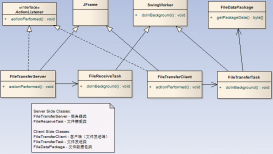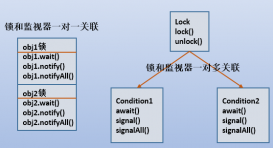一、原理
模擬水波紋效果,最常見的是sine或者cosn的函數(shù),周期性變化,貼近自然。
當(dāng)水波紋中中間開始向四周擴(kuò)散的時(shí)候,一般都是慢慢的失去能量,振幅也是越來(lái)越小,所以程序要模擬這個(gè)過(guò)程時(shí)候,要加上一個(gè)能量遞減因子。然后用公式 y = a*sine(bx + c)來(lái)表示波紋公式。
二、程序?qū)崿F(xiàn)
最重要的一步是計(jì)算水波紋的振幅。在任意一點(diǎn)確定水波的中心位置,可以是鼠標(biāo)隨機(jī)選取,對(duì)半徑范圍內(nèi)的像素位置實(shí)現(xiàn)水波生成,然后轉(zhuǎn)換為位置,對(duì)位置實(shí)現(xiàn)浮點(diǎn)數(shù)取整,然后使用適當(dāng)?shù)牟逯邓惴ǎ纠褂秒p線性插值。
三、程序效果

四、濾鏡完全源代碼
這次我寫了些中文注解,不給源代碼的博文不是好博文
|
1
2
3
4
5
6
7
8
9
10
11
12
13
14
15
16
17
18
19
20
21
22
23
24
25
26
27
28
29
30
31
32
33
34
35
36
37
38
39
40
41
42
43
44
45
46
47
48
49
50
51
52
53
54
55
56
57
58
59
60
61
62
63
64
65
66
67
68
69
70
71
72
73
74
75
76
77
78
79
80
81
82
83
84
85
86
87
88
89
90
91
92
93
94
95
96
97
98
99
100
101
102
103
104
105
106
107
108
109
110
111
112
113
114
|
package com.gloomyfish.filter.study; import java.awt.image.bufferedimage; public class waterfilter extends abstractbufferedimageop { private float wavelength = 16; private float amplitude = 10; private float phase = 0; private float centrex = 0.5f; private float centrey = 0.5f; private float radius = 50; private float radius2 = 0; private float icentrex; private float icentrey; public waterfilter() { } @override public bufferedimage filter(bufferedimage src, bufferedimage dest) { int width = src.getwidth(); int height = src.getheight(); if ( dest == null ) dest = createcompatibledestimage( src, null ); int[] inpixels = new int[width*height]; int[] outpixels = new int[width*height]; getrgb( src, 0, 0, width, height, inpixels ); icentrex = width * centrex; icentrey = height * centrey; if ( radius == 0 ) radius = math.min(icentrex, icentrey); radius2 = radius*radius; int index = 0; float[] out = new float[2]; for(int row=0; row<height; row++) { for(int col=0; col<width; col++) { index = row * width + col; // 獲取水波的擴(kuò)散位置,最重要的一步 generatewaterripples(col, row, out); int srcx = (int)math.floor( out[0] ); int srcy = (int)math.floor( out[1] ); float xweight = out[0]-srcx; float yweight = out[1]-srcy; int nw, ne, sw, se; // 獲取周圍四個(gè)像素,插值用, if ( srcx >= 0 && srcx < width-1 && srcy >= 0 && srcy < height-1) { // easy case, all corners are in the image int i = width*srcy + srcx; nw = inpixels[i]; ne = inpixels[i+1]; sw = inpixels[i+width]; se = inpixels[i+width+1]; } else { // some of the corners are off the image nw = getpixel( inpixels, srcx, srcy, width, height ); ne = getpixel( inpixels, srcx+1, srcy, width, height ); sw = getpixel( inpixels, srcx, srcy+1, width, height ); se = getpixel( inpixels, srcx+1, srcy+1, width, height ); } // 取得對(duì)應(yīng)的振幅位置p(x, y)的像素,使用雙線性插值 /*if(xweight >=0 || yweight >= 0) { outpixels[index] = imagemath.bilinearinterpolate(xweight, yweight, nw, ne, sw, se); } else { outpixels[index] = inpixels[index]; }*/ outpixels[index] = imagemath.bilinearinterpolate(xweight, yweight, nw, ne, sw, se); } } setrgb( dest, 0, 0, width, height, outpixels ); return dest; } private int getpixel(int[] pixels, int x, int y, int width, int height) { if (x < 0 || x >= width || y < 0 || y >= height) { return 0; // 有點(diǎn)暴力啦,懶得管啦 } return pixels[ y*width+x ]; } protected void generatewaterripples(int x, int y, float[] out) { float dx = x-icentrex; float dy = y-icentrey; float distance2 = dx*dx + dy*dy; // 確定 water ripple的半徑,如果在半徑之外,就直接獲取原來(lái)位置,不用計(jì)算遷移量 if (distance2 > radius2) { out[0] = x; out[1] = y; } else { // 如果在radius半徑之內(nèi),計(jì)算出來(lái) float distance = (float)math.sqrt(distance2); // 計(jì)算改點(diǎn)振幅 float amount = amplitude * (float)math.sin(distance / wavelength * imagemath.two_pi - phase); // 計(jì)算能量損失, amount *= (radius-distance)/radius; // 計(jì)算能量損失, if ( distance != 0 ) amount *= wavelength/distance; // 得到water ripple 最終遷移位置 out[0] = x + dx*amount; out[1] = y + dy*amount; } } } |
以上就是本文的全部?jī)?nèi)容,希望對(duì)大家的學(xué)習(xí)有所幫助,也希望大家多多支持服務(wù)器之家。
原文鏈接:https://blog.csdn.net/jia20003/article/details/13159535















